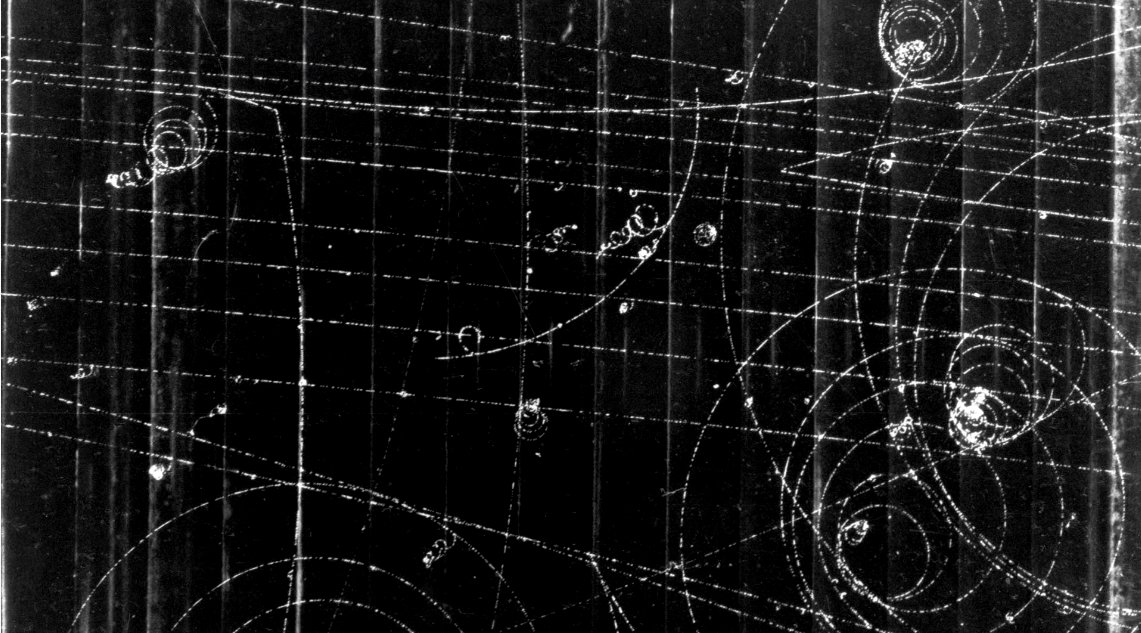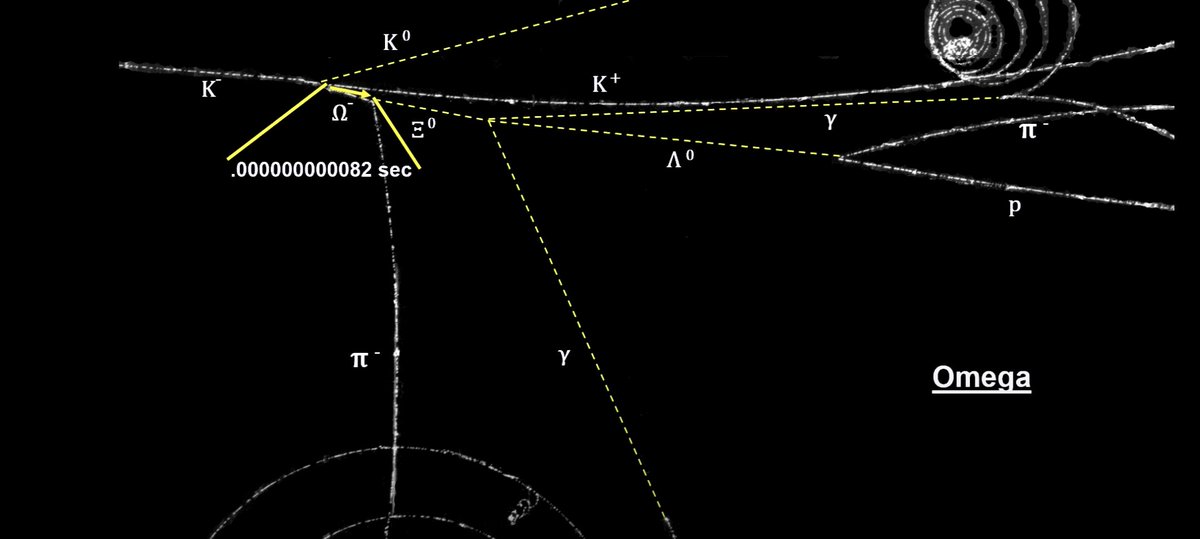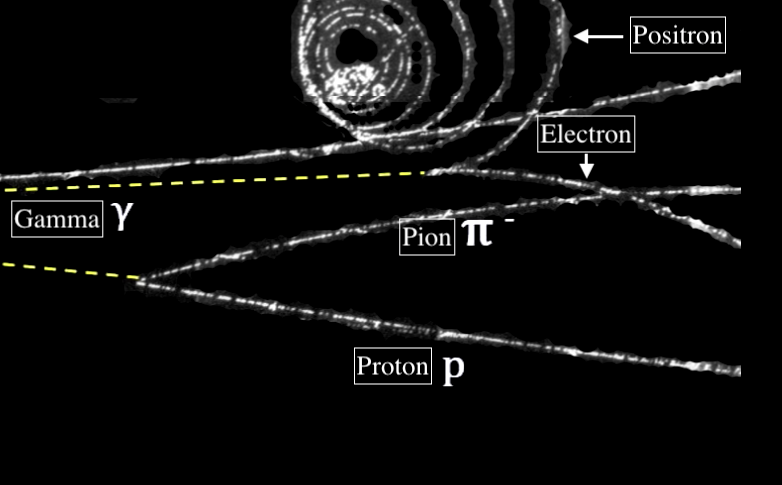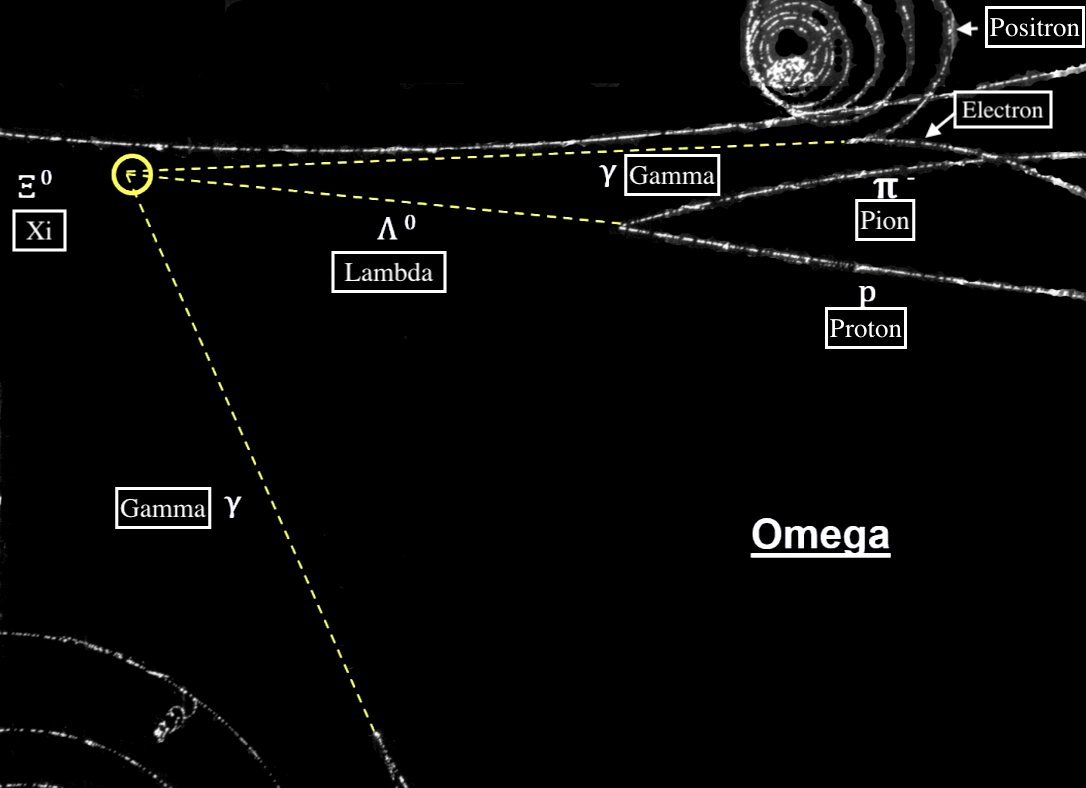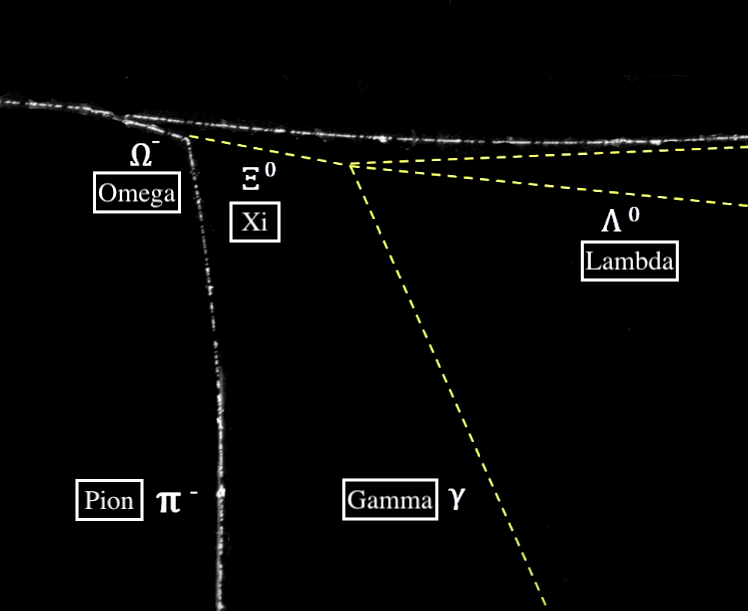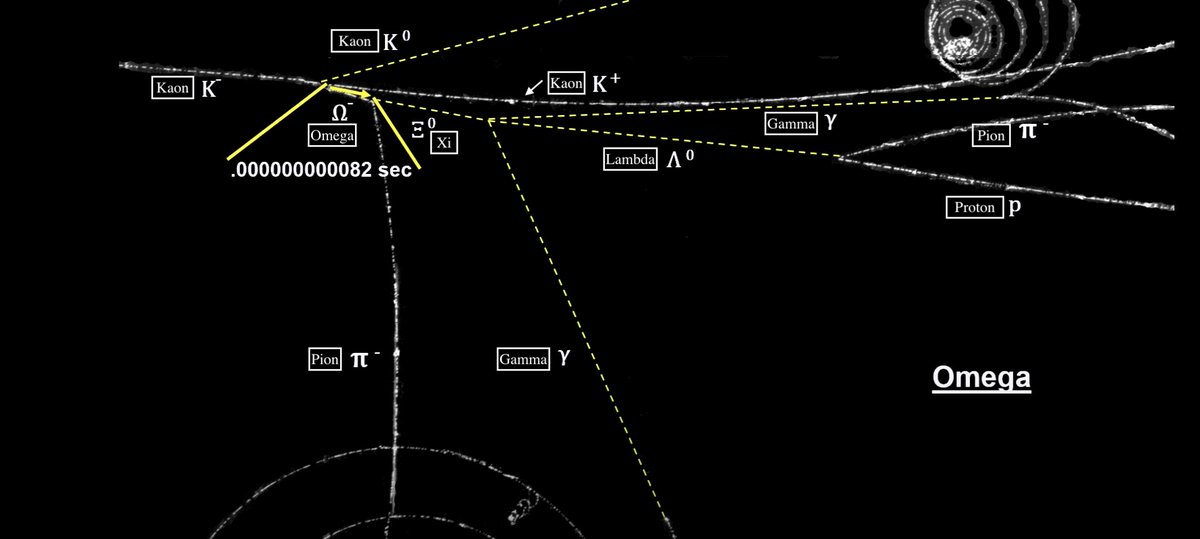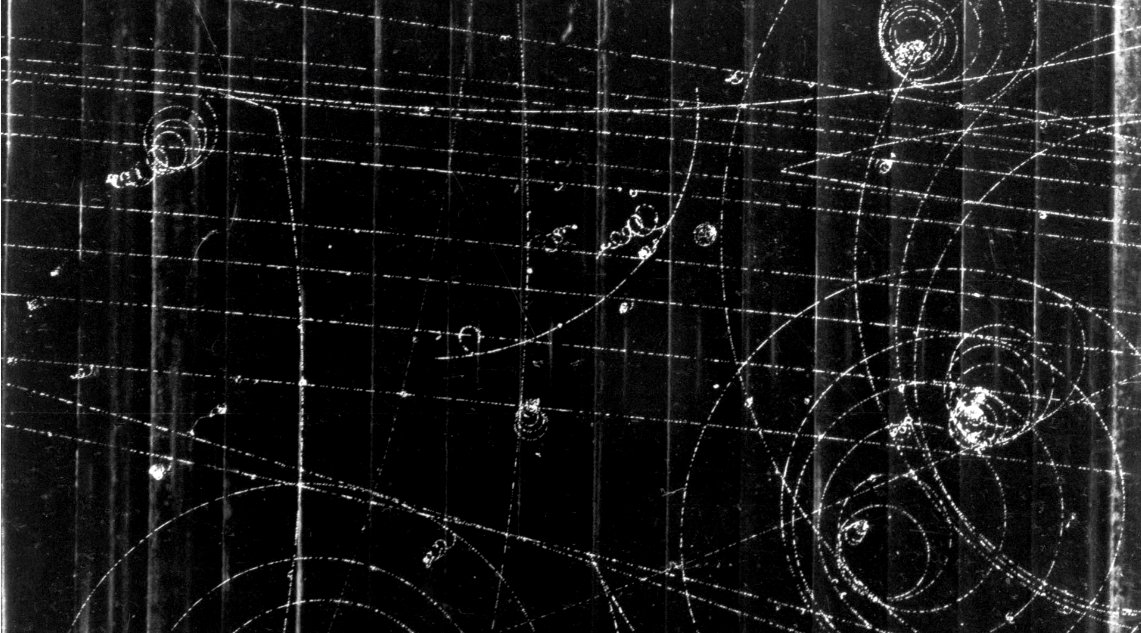So, as a teaser/tidbit for our upcoming @whatstheii Salon, I would like to introduce you to what I think is The Most Interesting Photo in (Particle) Physics:
This is is a photo showing the discovery of the Omega particle in 1964, predicted by Murray Gell-Mann 3 years earlier.
This is is a photo showing the discovery of the Omega particle in 1964, predicted by Murray Gell-Mann 3 years earlier.
Here& #39;s that event, once you remove all the noise from the other particle events taking place in the photo:
So what& #39;s going on here?
Well, these various lines, are the paths that charged particles take, when traveling through a bubble chamber, a vessel filled with transparent liquid, as was standard for the time (typically superheated liquid hydrogen).
Well, these various lines, are the paths that charged particles take, when traveling through a bubble chamber, a vessel filled with transparent liquid, as was standard for the time (typically superheated liquid hydrogen).
The application of a magnetic field to this chamber, allows for the identification of particles, based on their charges- electrons, for example, (negatively charged particles) will curve clockwise, where as photons, (positively charged particles) will curve counter clockwise.
In addition to charge, the curvature of a track is also related to momentum, in that, the higher the curvature of a track, the slower the particle must be moving.
Also, whenever we see two lines diverging from the same point, we know a particle decayed into something else.
Also, whenever we see two lines diverging from the same point, we know a particle decayed into something else.
So, moving from right to left, the set of ~concentric circles in the upper right corner, are from a Positron, and it& #39;s pair Electron creates the slightly curved line originating from the same point, resulting from a Gamma ray, as well as a Pion/Proton pair.
The Gamma ray& #39;s path is represented by the uppermost dashed yellow line, and these rays often result from the decay of a neutral "system", and are the highest energy states of Photons (Gamma rays being on the electromagnetic spectrum, are a type of light).
While it& #39;s beyond the scope of this thread, we know these Gamma rays can create these particle pairs, because they carry enough energy to disturb particle fields, and it is these "field disturbances", that create the phenomenon we perceive as particles.
The yellow dashed line on the bottom here, is the decay event of a neutral Lambda particle, which gave off a Pion, carrying away the negative charge, and a Proton, carrying off the positive charge.
The line on the bottom must be drawn on, because neutral particles don& #39;t leave tracks! In short, they tend not to have strong magnetic fields, which are needed to transfer energy from particles to the surrounding medium to create the bubbles that make the tracks.
So, we know that our Positron/Electron pair where spawned from Gamma rays, and our Pion/Proton pair were spawned from the decay of a Lambda particle, but we also know Gamma rays can be emitted as a result of particle decay.
From this we know that the two Gamma rays and the Lambda particle were created in a decay event themselves.
Due to the conservation laws, we can add the masses and charges of these particles, and fit them to the description of a known particle: the neutral Xi particle.
Due to the conservation laws, we can add the masses and charges of these particles, and fit them to the description of a known particle: the neutral Xi particle.
Quick recap: we now see a Xi particle decaying, giving off Two Gamma rays, which both spawned Electron/Positron pairs, and a Lambda particle, which decayed into a Pion/Proton pair.
Now we can observe the beginning of the Omega particle event: it decayed into a Xi/Pion pair, and it just so happens that when you combine these particle properties, with the particle properties of the prior ones, they fit Gell-Mann& #39;s prediction of the Omega particle properties!
So the chain went:
Omega -> Xi/Pion
Xi-> Gamma/Gamma/Lambda
Gamma (2) -> Positron/Electron (2)
Lamba -> Pion/Proton.
Omega -> Xi/Pion
Xi-> Gamma/Gamma/Lambda
Gamma (2) -> Positron/Electron (2)
Lamba -> Pion/Proton.
However, this isn& #39;t technically, the beginning, as the Omega particle was created as the result of a Kaon colliding with a Proton, as a result of a beam of these K particles being fired into the hydrogen chamber.
Zooming out, we see the Kaon flying through the chamber, colliding with a Hydrogen Proton, and creating the Omega particle (which carried off the Kaon& #39;s negative charge!), which decayed into *all of this exciting particle activity in 82 trillionths of a second*.
Addendum: This discovery was tremendous for Physics, as it helped solidify quark theory, which helped explain the existence of a large number of particles that were assumed to be elementary, by showing them to be composites of a more fundamental set of particles: Quarks!
If you& #39;re interested in where I learned this/got this information from, here& #39;s the video: https://youtu.be/wAsceiIMY2I ">https://youtu.be/wAsceiIMY...
Also, if you want to chat with us about the state of Physics, the nature of the Universe, and how space can expand faster than the speed of light, you can do all of that here- book a slot and we& #39;ll see you there! https://www.eventbrite.co.uk/e/still-lost-in-math-has-beauty-led-physics-astray-interintellect-salon-tickets-119537240103">https://www.eventbrite.co.uk/e/still-l...

 Read on Twitter
Read on Twitter